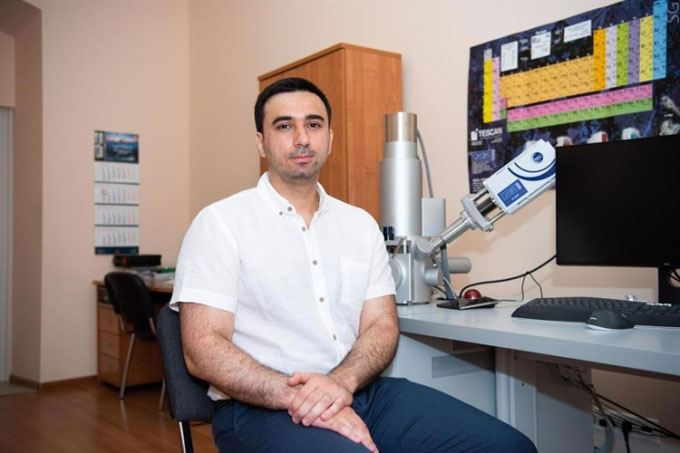Russian scientists develop a new low-cost aluminum alloy with advantages such as electrical conductivity, durability, and excellent heat resistance.
A research team at the National University of Science and Technology (NUST MISIS), along with other Russian scientists, has created a low-cost aluminum alloy capable of withstanding temperatures 100 – 150 degrees Celsius higher than similar materials, Sputnik News reported on November 1. The new research was published in the Journal of Alloys and Compounds.

Torgom Akopyan, researcher at the Department of Metal Science at NUST MISIS. (Photo: Sergey Gnusko/NUST MISIS)
Aluminum and most aluminum alloys exhibit high corrosion resistance in various environments, including the atmosphere, seawater, freshwater, many chemical solutions, and food. Coupled with its low density and good thermal and electrical conductivity, aluminum is widely used in aircraft, automobiles, electronics, and industry.
Aluminum wire could be an effective alternative to the heavy and expensive copper wires currently in use. Utilizing aluminum alloys in aircraft, high-speed rail vehicles, and other equipment will help reduce weight and size, significantly saving fuel and minimizing harmful waste released into the environment. However, the methods for producing such alloys are currently very costly and labor-intensive.
The research team at NUST MISIS has proposed the structure of a new aluminum alloy and the technology for producing conductors from this material. They stated that this alloy is distinct due to its relatively low cost, ease of production, and several unique physical properties.
“Our material has a thermally stable structure and can withstand temperatures up to 400 degrees Celsius. All known aluminum alloys significantly soften at temperatures of 250 – 300 degrees Celsius. Our alloy contains copper (Cu), manganese (Mn), and zirconium (Zr), providing a unique combination of electrical conductivity, strength, and heat resistance,” said Torgom Akopyan, a researcher at the Department of Metal Science at NUST MISIS.
One of the key features of the new alloy is that about 10% of its volume comprises special nanoparticles containing zirconium and manganese, which are distributed throughout the aluminum structure. The alloy is produced using electromagnetic crystallization equipment that employs the ElmaCast technology developed at the Hydrokinetics Research and Production Center (Krasnoyarsk). In the future, researchers will continue to optimize the chemical composition and processing of this new material.


















































